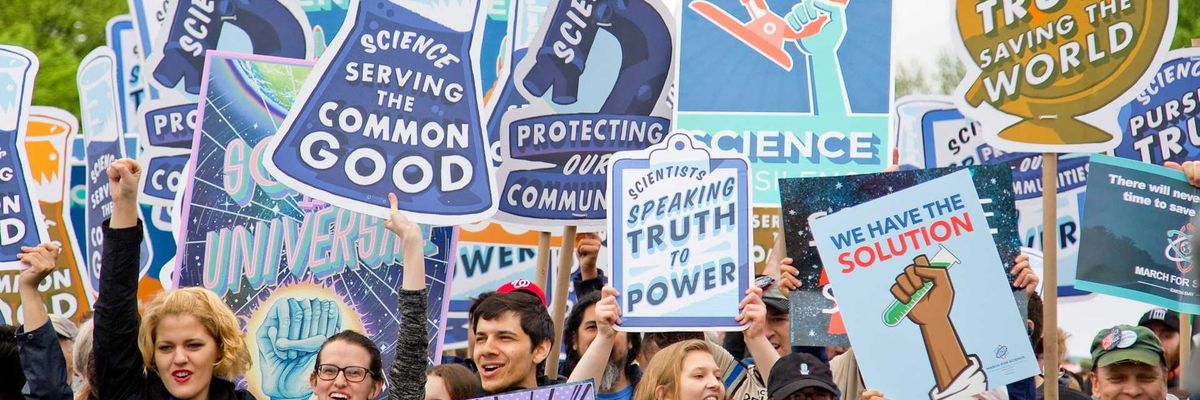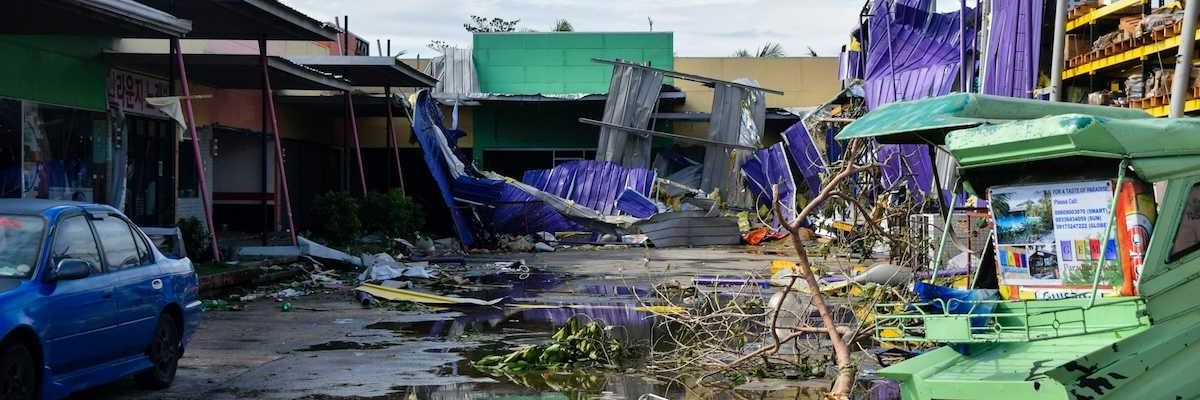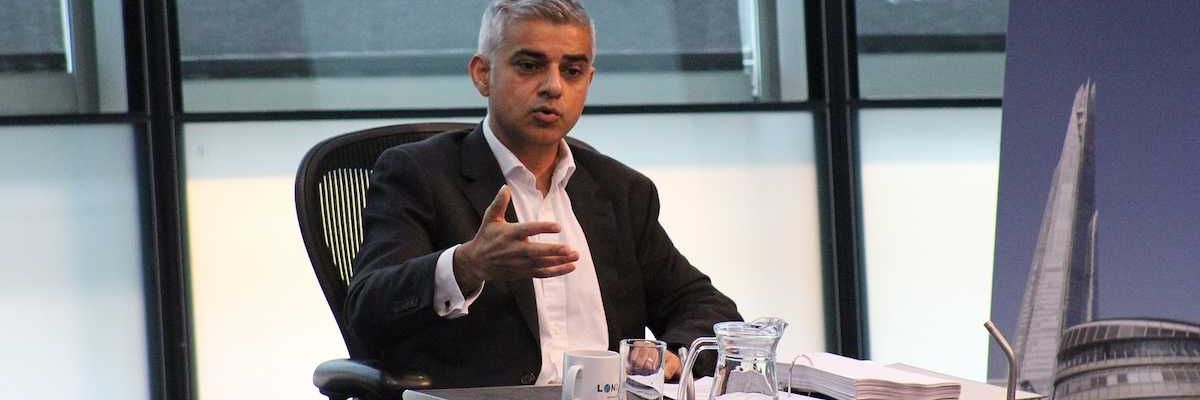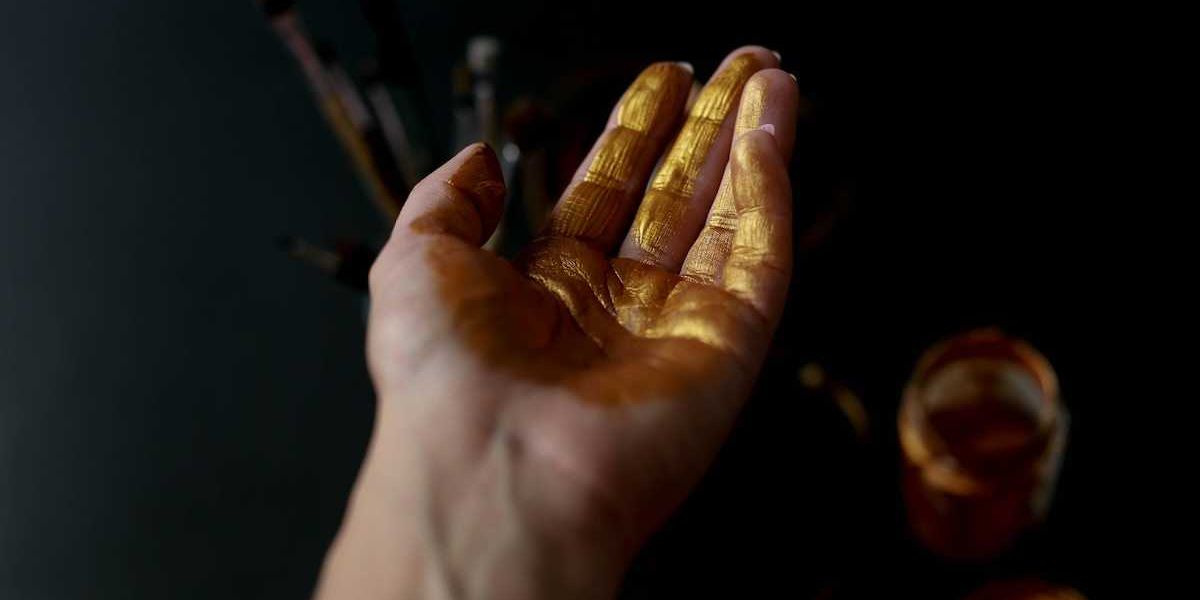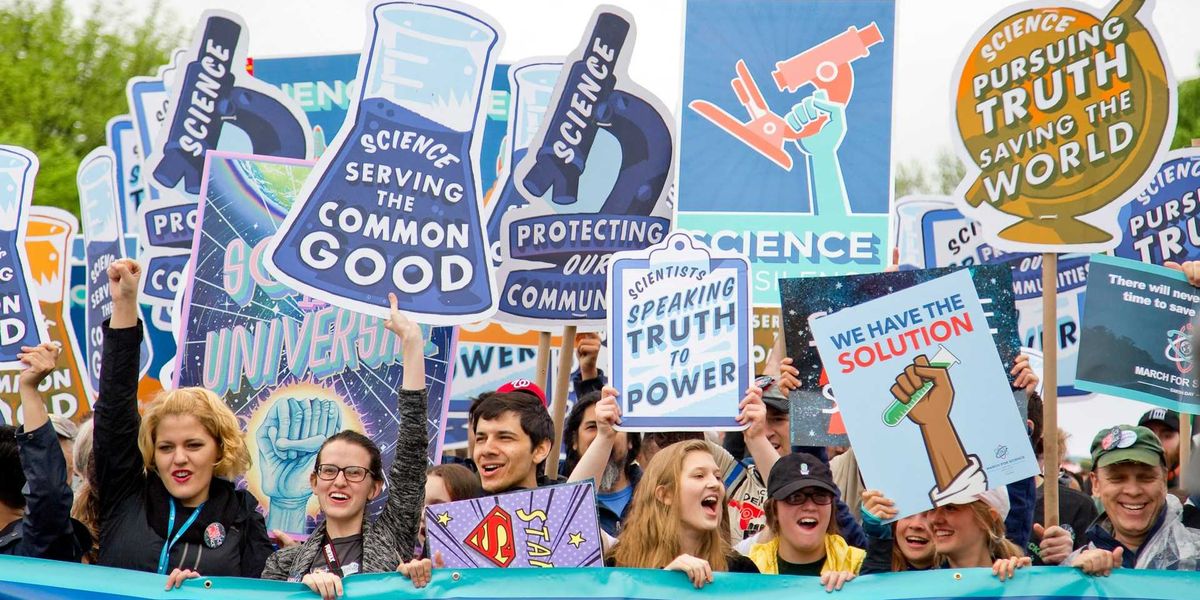sids
Banking on Climate Change Report identifies biggest fossil fuel bankers
The publication identifies US banks collectively as the biggest source of funding for fossil fuel expansion since the Paris Agreement on climate change was adopted, accounting for 37% of all global fossil fuel financing.
WWF report reveals “devastating” human impact on planetary health
Human activity is pushing the planet's natural systems that support life on Earth to the brink, according to a report published by the World Wildlife Fund (WWF), which presents a "sobering picture" of the impact of human activity on the world's wildlife, forests, oceans, rivers and climate.
Bahamas deeply concerned about dangers of climate change.
The Bahamas says it is deeply concerned about the dangers of environmental degradation and climate change, stating that they threaten the region’s very survivability.
UNITED NATIONS – The Bahamas says it is deeply concerned about the dangers of environmental degradation and climate change, stating that they threaten the region’s very survivability.
Related articles
Irma leaves a trail of death and...
Antigua appeals to international...
Barbados urges UN, World Bank to...
“With what we have witnessed just recently with the passage of Hurricanes Harvey, Irma and now Maria, I cannot underscore sufficiently the importance the Bahamas attaches to combating climate change, and the preservation and protection of the environment,” Minister of Foreign Affairs Darren Henfield told the 72nd Session of the United Nations General Assembly Debate on Saturday.
“Even while these hurricanes were occurring, there have been earthquakes in Mexico, resulting in further tragic loss of life and destruction,” he added. “Climate change is global. We have expressed before, and today we reiterate, our thoughts and prayers to all adversely impacted by these devastating events.”
Henfield emphasised that it was the third time in three years that the Bahamas has been hit by a major hurricane, adding that “Maria is still churning in our territory”.
“There are two more months before the end of the hurricane season, and we can only pray that we will be spared from further destruction and loss,” he said, pointing out that Hurricane Irma changed course and did not directly hit the entire Bahamian archipelago, thus minimising the impact the country’s tourism industry.
But, Henfield stated that the country was not entirely spared.
He said the Bahamian southern islands experienced serious damage and Ragged Island was totally devastated and is now uninhabitable.
Additionally, he said tornadoes inflicted considerable damage on the northern islands of Bimini and Grand Bahama.
The Foreign Affairs Minister said the Bahamas is grateful to international partners who provided immediate support after the passage of Hurricane Irma, and now continue to stand by its side as it begins “the painful and burdensome process of restoration and rebuilding”.
Henfield commended the UN Secretary-General for convening the recent High-Level Meeting “to allow those of us impacted to bring focus on these events to other potential partners”.
He noted that one of the countries immediately affected by Hurricane Irma was Cuba, “which, as on previous occasions, caused this massive hurricane to lose some of its energy and probably led to a lesser impact on our neighbour, the United States of America”.
Henfield lamented that while all developing countries affected have been placed on a short-list for assistance to shore up their internal conditions towards recovery, Cuba does not enjoy this capacity to the fullest.
He also said the Bahamas joins other nations in calling for the Congress of the United States to reconsider the legislative barriers to the biggest of the Caribbean islands “in order for it to develop to its fullest potential as a member of the international community”.
Henfield said it is the intention of the Bahamian Government, working with the private sector, to create out of the destruction of Ragged Island the first fully green island in the region, utilising renewable energy and smart technologies from solar energy to sustainable water purification systems to create a “more sustainable, resilient, island community”.
He said the implications for the existence of Small Island Developing States (SIDS), like the Bahamas, as they are confronted with global warming, rising sea levels, and more severe and frequent hurricanes and other extreme weather events, are “all too clear”.
“For the first time in its history, the Bahamas evacuated whole communities to safe quadrants ahead of Hurricane Irma. What’s next: wholesale evacuation of the entire Caribbean?” he asked, calling on the international community to recognise “the imperative of accelerating the efforts to deal urgently with the adverse impact of climate change and to do so in a coordinated way.
“Only then will we mitigate against these ferocious and frequent destructive weather events, which now potentially threatens to add to the world’s migration issues,” he added, stating that well over two decades ago, the Bahamian Government, recognising the very real threat posed to its very existence, upgraded its human capital capacity to address the unintended consequences of climate change, as well as its commitment to environmental conservation.
Through its many marine protected areas, Henfield told the Debate that the Bahamas is committed to the conservation of sustainable oceans, as well as through active involvement in initiatives such as 10X20, and participation in the consultative process of Biodiversity Beyond National Jurisdiction.
In this context, the Foreign Affairs Minister said the Bahamas has presented its candidature once again for a seat on the Council of the International Maritime Organisation in Category “C”.
He said the continuing imperative for the Bahamas, as well as the rest of the Caribbean is the re-evaluation of the measurements used to determine economic well-being.
He noted that the International Monetary Fund (IMF) in its Policy Brief on “Vulnerability and Debt in Small States” recognised that “Many [SIDS] face an uncertain future.”
Henfield said the Bahamas continues to dispute the use of Per Capita Gross Domestic Product/Gross National Product (GDP/GNP) as an instrument to measure wealth and economic development, stating that “the use of this one-dimensional instrument prohibits countries that are most in need to receive development assistance or loans at concessional rates.
“It is time for us to replace that metric with a realistic measurement that takes into account the vulnerability and fragility of SIDS to exogenous shocks,” he said.
Notwithstanding the Bahamas’ best efforts at self-sufficiency, Henfield said exogenous shocks, in the form of reduced correspondent banking relationships, continue to create challenges for the region.
He said international banking institutions, fearing that they may be subject to fines and sanctions related to illicit activities of money laundering and terrorist financing, “have pulled out en masse”.
The Foreign Affairs Minister said citizens in the region depend on the services provided by these entities, adding that they have now become “severely disadvantaged as a result of the actions taken”.
“This threatens our ability to remain competitive as one of the leading international centres and hinders our efforts to expand our trading relationships,” he said, urging the international community to work together to find another way to deal with the issue “and allow input from those to be impacted by their decisions before moving the goalposts again”. (CMC)
Island states need better data to manage climate losses.
In the Caribbean and Pacific, islanders are already hit by climate change, but lack tools to measure the damages for leverage in international negotiations.
By Adelle Thomas
Loss and damage – an emerging issue in climate negotiations – is not just a future threat to highly vulnerable small island developing states (SIDS): it is happening now.
“Loss and damage” is a term describing the residual impacts of climate change that cannot be prevented by either mitigation or adaptation. This includes permanent and irreversible losses, such as loss of life or eradication of habitats, or damages that can be repaired, including deterioration of infrastructure.
Impacts from climate change are already occurring. SIDS need to be able to determine the scale of these impacts to effectively manage consequences and to make the case for support in international policy, climate finance and scientific arenas.
In our new study, published in Regional Environmental Change, my co-author Lisa Benjamin and I explore existing methods that SIDS are using to assess and manage loss and damage. We interviewed negotiators from the Alliance of Small Island States (AOSIS) and analysed the intended nationally determined contributions (INDCs) of AOSIS member countries.
We aimed to gain an understanding of loss and damage that is already being experienced by SIDS, how these countries are managing these impacts and identify challenges that will need to be addressed as global temperatures increase.
What we found is that SIDS are already identifying loss and damage in their countries.
Six of the seven interviewees identified tropical storms as being the source of the majority of existing loss and damage, in most cases naming specific storms and levels of financial damages experienced.
The majority of INDCs similarly identified damages due to extreme events and often included associated costs. While these storms were acknowledged as resulting in loss and damage, attribution of these impacts specifically to climatic changes is a complex process. However, warmer sea surface temperatures and sea level rise due to climate change have been linked to more intense tropical storms and subsequent damages.
“Hurricane Joaquin resulted in major losses across islands with roads washed out, communities looking to be reestablished. From that storm also, crops were washed out making it difficult for economies to recover because crops that they are dependent on for income were no longer” – Caribbean respondent
“Cyclone Heta destroyed 95% of the museum which held cultural and historical records and artifacts” – Pacific respondent
All interviewees identified slow-onset events, including sea level rise and ocean acidification, as having already resulted in loss and damage.
However, respondents were unable to provide financial costs of loss and damage associated with these events, particularly when impacts are ongoing.
“We don’t have sufficient information on costs but we are still able to see the impacts. Specifically, historical buildings that were once on hard ground are now underwater” – Caribbean respondent
“Anytime there is a storm or major high tide, along [a main road] the sand needs to be constantly replaced and boulders need to be replaced that were put in to prevent washing out of the road. The high tide mark is at such a level that water is in the road. Even in the presence of a sea wall there is breaching from time to time. These are ongoing costs” – Caribbean respondent
The lack of financial costing associated with loss and damage from slow-onset events was attributed to the absence of holistic methodologies for determining these impacts.
SIDS often have existing disaster assessment methodologies and are accustomed to assessing post-storm damages and compiling financial costs. However, there are no corresponding ongoing and systematic assessments of these impacts and costs from slow-onset events.
“We’re a very reactive society at the moment, so we respond to events” – Caribbean respondent
The lack of methodologies for slow-onset event loss and damage assessment is further hindered by a lack of data. All respondents indicated that there is very little historical or baseline data that would aid in determining the extent of loss and damage.
While there may be partial datasets, there are gaps due to uneven data collection where most data are collected in urban areas or where data is not digitised or has been lost. INDCs also recognise the need for data collection, and state that existing efforts are insufficient.
“We’re aware that this is the kind of data that needs to be built up, but it’s still in raw form. Some of it has been collected in [the capital] but in outer islands we’re just starting to collect data on climate change impacts. There’s a huge difference between capital and outer islands” – Pacific respondent
“There’s no real consistent national data to monitor loss and damage on a regular basis. We often monitor through the Met Office temperature, winds etc. and that is recorded in an extreme event. But there’s no regular active monitoring of acidification, sea level rise or bleaching” – Caribbean respondent
Interviewees identified some ways they are currently responding to existing loss and damage, including the protection of coastal infrastructure and relocation of communities.
However, most SIDS lack specific policies or mechanisms that address loss and damage. Some existing policies on disaster risk reduction and climate change adaptation do include components of loss and damage, mostly on damages associated with extreme events. For slow-onset events in particular, the response remains ad hoc.
To summarise, SIDS see loss and damage occurring but have three common problems in managing it.
Firstly, the deficit of historical and baseline data – along with uneven coverage of less populated locations – makes it difficult to attribute impacts specifically to climate change. The lack of data is also likely resulting in loss and damage that is going undetected.
Secondly, there are significant gaps in assessing the financial costs of loss and damage, particularly for slow-onset events. The lack of methodologies to determine these costs as well as the lack of collection of information on non-economic losses contributes to this issue.
Lastly, SIDS have few policies in place to address loss and damage, leading to an ad hoc approach that is inefficient in assessing and managing these impacts.
The current modalities of addressing loss and damage in SIDS appear to be inadequate, and will need to be improved as global temperatures, and impacts, increase. There is a need for significant capacity building in SIDS for data collection, policies and mechanisms to aid in assessment, monitoring and robust responses to loss and damage.
Adelle Thomas is senior Caribbean research associate at Climate Analytics
Kiribati confronts climate upheaval by preparing for ‘migration with dignity.’
The Republic of Kiribati pushes for ‘Migration with Dignity’ as a way of adapting to climate change and overpopulation.
High tide keeps getting higher on the islands of the Republic of Kiribati – 33 coral atolls in the Pacific Ocean that rest only a few feet above sea level. In Kiribati culture, Nareau the Creator scattered stones to the north and south to create this mosaic of coral and rock. But, today, the effects of climate change are closing in and there’s no higher land to move to. Even as the atolls shrink, Kiribati’s population grows. The country is experiencing baki-aba: “land hunger.” In 2014, Kiribati president, Anote Tong purchased 20 square kilometers on Vanua Levu, a Fiji island making this the first international land purchase intended for climate refugees.
For Kiribati, adapting to climate change might mean relocating entirely.
Pacific islanders’ identities are very much tied to their ancestral land, the physical islands on which they live. Migration may mean a national and cultural loss, especially when most traditions are preserved orally.
“They worry about the new country and if the people of that country will accept them,” Anterea Claire Anterea, co-founder of Kiri-CAN (Kiribati Climate Action Network International) and well-known climate activist in the country, said.
Pacific island nations are some of the most vulnerable spots on Earth from climate change. According to the latest Intergovernmental Panel on Climate Change (IPCC) report, small islands emit less than one percent of global greenhouse gas emissions, but they disproportionately suffer the effects of rising tides, drought, and extreme storms.
Today, small island states are often allocating their scarce resources away from economic development towards more immediate climate adaptation measures.
For example, sandbags line the shores of Kiribati and causeways are raised to the stop waves from breaking over the Kiribati’s only road. Kiribati also faces more frequent droughts that ruin crops and destroy farmer’s livelihoods. As sea levels rise, citizens worry about saltwater contamination of their freshwater lens – a rain-filled bubble of freshwater that rests below Kiribati’s soil, but still above the ocean water. Exacerbating climate issues, overcrowding in Kirbati’s largest cities has led to poor sanitation and public health problems.
Anote Tong, former president of Kiribati, advocates for “migrating with dignity.” This policy was designed to give citizens the tools to relocate legally, finding work in other nations like Australia and New Zealand. Tong prefers this slow and methodical transition to the alternative – moving tens of thousands of citizens at once in response to a catastrophic flood or drought.
A planned migration means that I-Kiribati (Kiribati citizens) can move on their own accord, instead of becoming climate refugees – victims of climate change left stateless with questionable legal rights and potentially perceived as burdens on any host country. Colloquially, the term “climate refugee” is used to describe any person leaving their home due to the effects of climate change, i.e. drought, flooding, or extreme weather.
Trans-nationally, the term “climate refugee” has no legal clout. That means climate refugees might not have human rights when they migrate to a new nation. In order to be a refugee – by current, global legal standards – a person must be facing political persecution.
In 2012, Ioane Teitiota, a Kiribati native, applied for asylum in New Zealand on the grounds that he was unable to grow food or find potable water in Kiribati. The courts eventually rejected the case and Teitiota and his family were deported. Teitiota could not prove persecution.
The court conceded that Teitiota met a “sociological” definition of a refugee, but not a legal one. Teitiota has appealed to the United Nations High Commissioner for Human Rights.
“First and foremost – let it be known we do not want to [migrate] and become refugees!” Linda Uan said. Uan is a household name in Kiribati, known for co-founding the broadcasting and media production company Nei Tabera Ni Kai Video Unit (NTNK) which shares over 400 stories on climate change and social justice.
“To an I-Kiribati mind – it is important to be self-reliant and we’ve been raised that way,” added Uan.
“Migration to a new country will not be possible without the means to support oneself.”
Gaining employable skills will make I-Kiribati (Kiribati citizens) useful contributors to any host country.
“If we train our people and they become skilled, then they would migrate with dignity and on merit, they would not be people running away from something,” Tong told Vice News. “They would be migrating, relocating as people with skills as members of communities they go into, even leaders, I hope.”
A 2014 Poverty Assessment says that about 2,000 young persons enter the labor force each year in Kiribati. Many seek jobs in other countries. The total unemployment rate in 2010 was 31 percent. In 2011, the government began a program at the Kiribati Institute of Technology for Technical and Vocational Education and Training to “upskill” young persons through carpentry, plumbing, nursing, accounting, and other marketable trades. Over half of young employees are out of work and many are migrating to South Tarawa, Kiribati’s capital, where life is perceived as ‘easier’ than on the outer islands. Others are seafarers or seek seasonal employment as fruit-pickers in Australia or New Zealand.
South Tarawa is now home to over half the Kiribati’s 113,000 people and exemplifies how climate change exacerbates poverty in a negative feedback loop. Water security for this overcrowded city is a major concern. I-Kiribati worry that the next drought and salinization will exhaust their supply in the freshwater lens.
With limited space and resources, the latest survey, a Household Income and Expenditure Survey in 2006, estimates that almost 22 percent of I-Kiribati live in poverty.
And yet, I-Kiribati have no word for “poverty.”
“We live simply and happily by what we have,” said Anterea.
Kiribati is only one example of how Pacific Island Countries (PICs) disproportionately suffer the consequences of climate change. According to a 2015 World Bank analysis, climate events like rising sea levels and severe weather events cost Pacific Island nations an average of US $284 million every year, making it nearly impossible for them to rise out of poverty.
At the International Climate Talks in Paris in December, 2015, Tong brought Kiribati’s climate conundrum to center stage when he stressed that just a 1.5 degree Celsius temperature increase would be catastrophic for Kiribati and other small island developing states (SIDS) – the current Paris Climate Accord has set a goal to keep warming under 2 degrees Celsius from pre-industrial levels. Tong and other leaders also called for compensation from developed nations to help fund climate adaptation measures, but in the end, the Paris Climate Agreement did not contain any basis for liability or compensation.
“Our culture is very strong in helping each other through our family [and] community. If the Developed States have that value in life…then you know that they are real people,” said Anterea. “We need them to start saving our country [by] cutting their emissions.”
Kiribati is one of the least developed nations in the world with one of the lowest GDPs and per capita income. Foreign aid – mostly from Taiwan, Japan, Australia, and New Zealand – makes up about a quarter of the country’s GDP and goes towards infrastructure development and public health initiatives.
Part of Australia’s aid program is dedicated to giving young I-Kiribati the skills they need to succeed in national or international labor markets. Australia’s Pacific seasonal workers program connects Pacific Islanders with jobs in Australia, typically in rural and remote areas.
“Australia understands the potential challenge climate change presents to habitation in the Pacific. We are committed to working on these issues,” a spokesperson for Australia’s Department of Foreign Affairs and Trade spokesperson wrote.
To that end, AusAID funded the Kiribati-Australia Nurses Initiative (KANI), which began in 2004 and was canceled in 2014. This $20.8 million dollar investment gave sixty full scholarships for I-Kiribati students to attend school in Brisbane Australia to gain vocational training and employable skills to Australian qualifications. After completion of the program, students were able to stay and work. But most chose to go home afterwards.
“Weekly, we’re sending off more people to work on fruit picking, the hospitality industry, seafarers, fishermen etc. Interestingly enough, they’re all very happy to return home after they completed their contracts,” Uan said, speaking of all Kiribati’s labor migrants. “They talked about greener pastures abroad – very good soil, fertile, lots of room for more houses, quality goods, but that was there – not home. Home is good where our loved ones are, where we belong!”
Anterea has visited many outer islands to ask them if they would ever migrate because of climate change. Most don’t want to leave their country. She says that both young and old generations worry about losing their traditions.
“Our culture is that oral culture that [is] shared from generation to generation. And therefore our local knowledge is passed on from generation to generation by word of mouth. The challenge for preserving [it] will be not easy,” she says.
Overcoming cultural and social differences have made it difficult for KANI students to adapt to life in Australia. Many reported homesickness. Students spent three months or more with Australian host families in order to adapt to Australian culture and practice speaking English. However, this assimilation strategy mostly made students feel isolated from one another. I-Kiribati live in bustling households with extended family. To move to an Australian home where they received their own quiet bedroom often exacerbated loneliness.
To counter culture shock, a group called the Queensland Kiribati Community Youth took shape In Brisbane. KANI students and a small community of I-Kiribati who married Australians organize cultural events. This community celebrates Kiribati holidays together, performs traditional songs and dances at special events, campaigns for climate justice for I-Kiribati, and alleviates one another’s homesickness by maintaining a comfortable cultural backdrop.
Maintaining these cultural practices helps KANI students cling to their identities. Three different waves of students have swept through the program, 87 overall. Some students are still finishing up their schooling. However, the pilot program was discontinued in 2014 due to low completion rates.
Sixty-eight students are expected to graduate in total – 64 as registered nurses, 3 as social workers and 1 with a Bachelor’s in Human Services. Sixteen students did not complete schooling to become registered nurses and five students quit before receiving any qualification at all.
Researcher Lara K. O’Brien interviewed KANI students for her published review of the initiative. All participants said climate change motivated their decision to join KANI.
“Everyone back on the islands is aware of the fact that sea level is rising and that climate is changing, but I don’t know why they don’t have that sort of urge, you know, to panic or to start looking for something to do before the future,” one student told O’Brien. “They just, they’re relaxing and they tell you, ‘Oh, we’d rather die here.’”
Critics say that KANI was not a cost-effective program since it cost on average $237,318 for one student to receive their Bachelor of Nursing. Others tout its successes as a way to send remittances to families on the homeland and prepare I-Kiribati youth for what’s seen as an inevitable migration.
Despite the criticisms and its cancellation, KANI is still cited as a model for planned labor migration – the kind that may make for a smoother transition for I-Kiribati.
“I believe that the KANI program is effective…because we witness that we have young people from our country that [are] working in Australia and allow them to stay as permanent resident[s]. We also see that they send good money back to help their family and that them young family settle and send their children to good schools in Australia,” said Anterea.
The KANI initiative arises from a recent history of Australia-Kiribati cooperation. In 2009, the two countries signed the Kiribati-Australia Partnership for Development, agreeing to work in tandem to raise the standard of living for I-Kiribati by improving basic education and work skills.
Australia plans to give $30.9 million to Kiribati in Official Development Assistance in 2017-2018 to increase quality of education, build a healthier population, and implement economic reforms. Other priorities include infrastructure improvements such as road, water, and sanitation projects.
KANI was not the first instance of labor migration in Kiribati. In the 1820s, several residents of Gilbert Island (a Kiribati island) were forced into slavery for plantations and agricultural labor in Australia, Fiji, Tahiti, and even as far away as Peru. Some 1,400 Gilbertese were sent to the Solomon Islands. This time, though, I-Kirbatis are determined that the decision to leave Kiribati will be just that – a decision.
CITATIONS:
O’Brien, L. K. (2013, October 25). MIGRATING WITH DIGNITY”: A STUDY OF THE KIRIBATI-AUSTRALIA NURSING INITIATIVE (KANI). https://kuscholarworks.ku.edu/bitstream/handle/1808/12947/OBrien_ku_0099M_13103_DATA_1.pdf?sequence=1
Shaw, L., Edwards, M., & Rimon, A. (2014, February). KANI Independent Review AidWorks Initiative Number: ING466 REVIEW REPORT. Retrieved from https://dfat.gov.au/about-us/publications/Documents/kiribati-australia-nursing-initiative-independent-report.pdf
SPARKS plugs gap in Caribbean climate research.
A high-performance computer dubbed SPARKS, or Scientific Platform for Applied Research and Knowledge Sharing is churning out the ‘big data’ Caribbean small island states need to accurately forecast and mitigate the effects of climate change on the region.
KINGSTON, Jamaica, Mar 11 2017 (IPS) - On Nov. 30 last year, a new high-performance ‘Super Computer’ was installed at the University of the West Indies (UWI) during climate change week. Dubbed SPARKS – short for the Scientific Platform for Applied Research and Knowledge Sharing – the computer is already churning out the ‘big data’ Caribbean small island states (SIDS) need to accurately forecast and mitigate the effects of climate change on the region.
Experts are preparing the Caribbean to mitigate the devastating impacts – rising seas, longer dry spells, more extreme rainfall and potentially higher impact tropical cyclones – associated with climate change. The impacts are expected to decimate the economies of the developing states and many small island states, reversing progress and exacerbating poverty. Observers say the signs are already here.
The system will help scientists to "better evaluate potential risk and impacts and effectively mitigate those risks as we build more resilient infrastructure." --UWI Professor Archibald Gordon
Before SPARKS, regional scientists struggled to produce the kinds of credible data needed for long-term climate projections. Only a few months ago, UWI’s lack of data processing capacity restricted researchers to a single data run at a time, said Jay Campbell, research fellow at the climate research group . Each data run would take up to six months due to the limited storage capacity and lack of redundancy, he said noting: “If anything went wrong, we simply had to start over.”
Immediately, SPARKS answered the need for the collection, analysis, modelling, storage, access and dissemination of climate information in the Caribbean. Over the long term, climate researchers will be able to produce even more accurate and reliable climate projections at higher spatial resolutions to facilitate among other things, the piloting and scaling up of innovative climate resilient initiatives.
So, when the Intergovernmental Panel on Climate Change (IPCC) produces its next global assessment report in 2018, there will be much more information from the Caribbean, making SPARKS a critical tool in the region’s fight against climate change.
Not only has the new computer – described as one of the fastest in the Caribbean – boosted the region’s climate research capabilities by plugging the gaping hole in regional climate research, UWI Mona’s principal Professor Archibald Gordon said, “It should help regional leaders make better decisions in their responses and adaptation strategies to mitigate the impact of climate change”.
The experts underscore the need for “big data” to provide the information they need to improve climate forecasting in the short, medium and long term. Now, they have the capacity and the ability to complete data runs that usually take six months, in just over two days.
The system will help scientists to better “evaluate potential risk and impacts and effectively mitigate those risks as we build more resilient infrastructure,” Gordon said.
As the World Meteorological Organisation (WMO) reported in June 2016 as “the 14th consecutive month of record heat for land and oceans; and the 378th consecutive month with temperatures above the 20th century average,” regional scientists have committed to proving information to guide Caribbean governments on the actions they need to lessen the impact of climate change.
The region has consistently sought to build its capacity to provide accurate and consistent climate data. Efforts were ramped up after a September 2013 ‘rapid climate analysis’ in the Eastern Caribbean identified what was described as “a number of climate change vulnerabilities and constraints to effective adaptation”.
The USAID study identified among other things “the lack of accurate and consistent climate data to understand climate changes, predict impacts and plan adaptation measures”. To address the challenges, the WMO and the Caribbean Institute for Meteorology and Hydrology (CIMH), with funding from USAID, established the Regional Climate Centre in Barbados.
The launch of the new computer is yet another step in overcoming the constraints. It took place during a meeting of the IPCC at UWI’s regional headquarters at Mona – significant because it signalled to the international grouping that the Caribbean was now ready and able to produce the big data needed for the upcoming 2018 report.
Head of the Caribbean Climate Group Professor Michael Taylor explained in an interview that the credibility and accuracy of climate data require fast computer processing speeds, fast turn-around times as well as the ability to run multiple data sets at higher resolution to produce information that regional decision-makers need.
“Climate research and downscaling methods will no longer be limited to the hardware and software,” he said, trying but failing to contain his excitement.
SPARKS also puts Jamaica and the UWI way ahead of their counterparts in the English-speaking Caribbean and on par with some of the leading institutions in the developed world. This improvement in computing capacity is an asset for attracting more high-level staff and attracting students from outside the region. Crucially, it aids the university’s push to establish itself as a leading research-based institution and a world leader in medicinal marijuana research.
“This opens up the research capability, an area the university has not done in the past. Before now, the processing of big data could only be done with partners overseas,” Professor Taylor said.
Aside from its importance to crunching climate data for the IPCC reports, SPARKS is revolutionising DNA sequencing, medicinal, biological and other data driven research being undertaken at the University. More importantly, UWI researchers agree that a supercomputer is bringing together the agencies at the forefront of the regional climate fight.
What is clear, SPARKS is a “game-changer and a big deal” for climate research at the regional level and for UWI’s research community.

